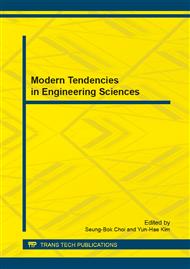p.375
p.380
p.384
p.393
p.397
p.401
p.411
p.415
p.423
Reactive Power Compensation for Unbalanced Fluctuating Loads by Using Two-Dimensional Space Vector and a Static Var Compensator
Abstract:
To modify the power factor and balance the three-phase currents simultaneously, this paper proposes the instantaneous compensator to calculate the compensation current. The instantaneous compensator utilizes two-dimensional instantaneous space vector and setting the active power as a constant for each cycle which can improve power quality effectively. Moreover, the instantaneous compensator requires an independent power source, whose capacity can be reduce by using a static var compensator (SVC). An SVC does not interfere with the capability of the instantaneous compensator. Field measurement data were analyzed. Simulation results confirmed the feasibility of correcting the power factor and balancing load currents simultaneously using the proposed method.
Info:
Periodical:
Pages:
397-400
Citation:
Online since:
February 2014
Authors:
Price:
Сopyright:
© 2014 Trans Tech Publications Ltd. All Rights Reserved
Share:
Citation:


